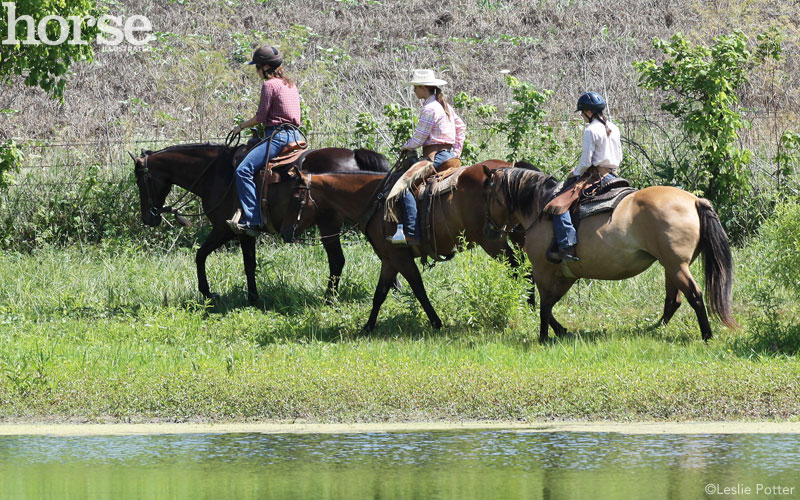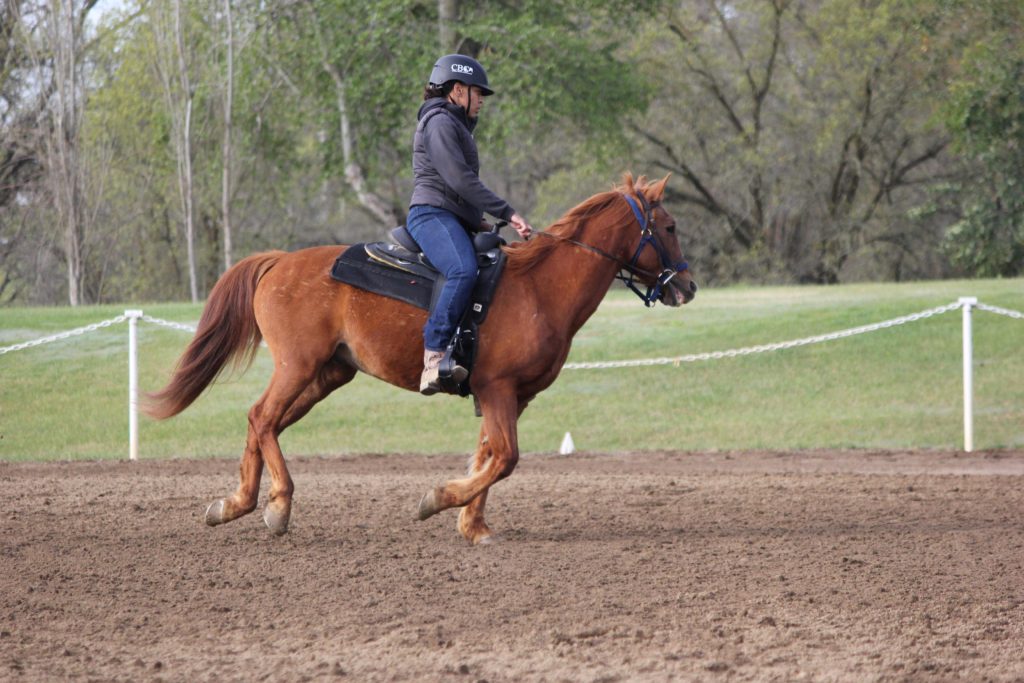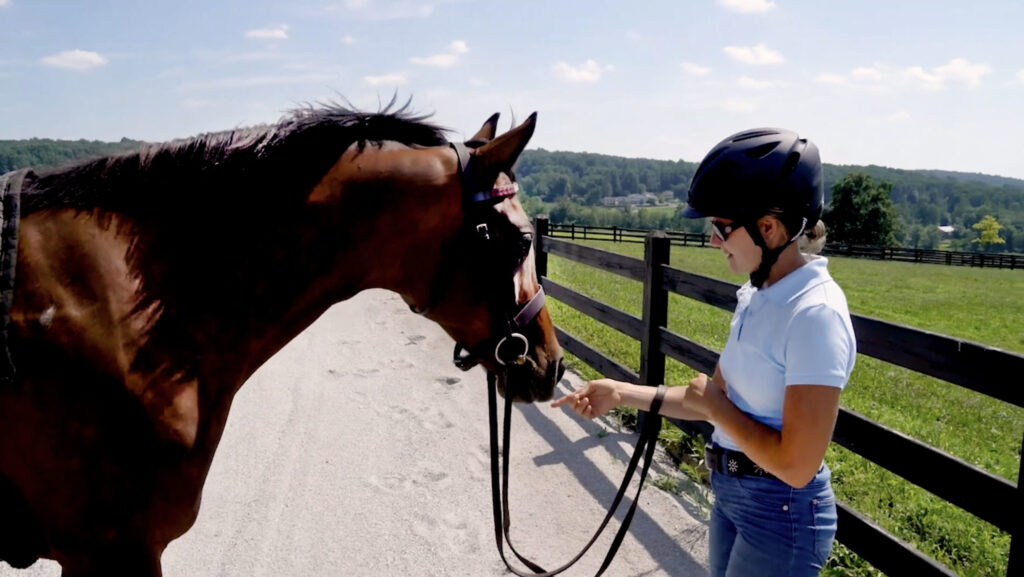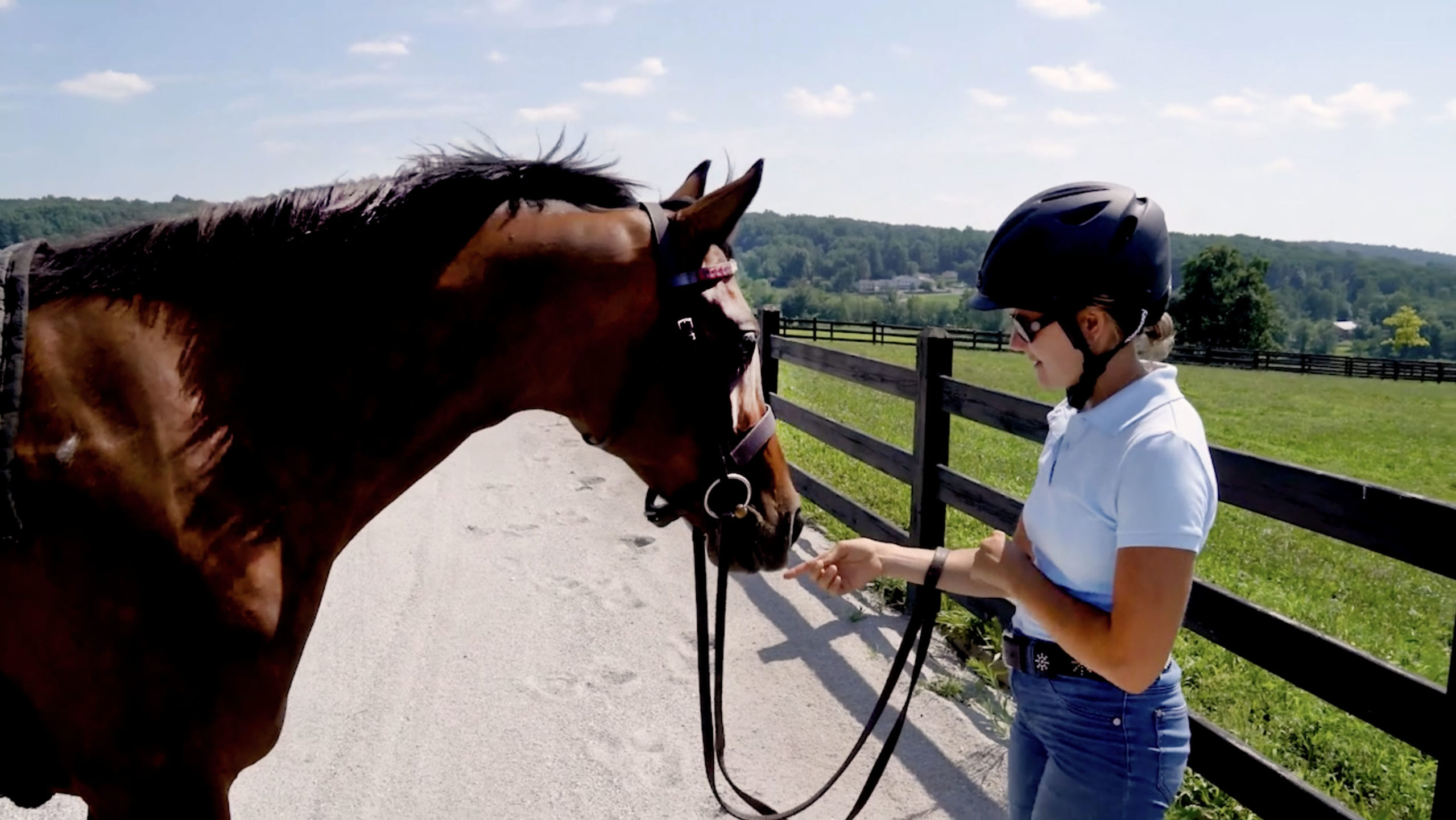Have you ever found yourself in a challenging situation while horseback riding? Whether you’re a beginner or an experienced rider, we can all face moments of uncertainty or difficulty when it comes to handling our horses. But fear not, because in this article, we’ll be diving into the topic of how to handle challenging horseback riding situations. From spooked horses to unexpected obstacles, we’ve got you covered. So, saddle up and get ready to learn some valuable tips and tricks that will help you navigate those tough moments in the saddle.
In horseback riding, there’s no shortage of situations that can put your skills and nerves to the test. Picture this: you’re out on a trail ride, enjoying the peaceful sounds of nature, when suddenly your horse spooks at a rustling bush. Or perhaps you’re competing in a show jumping event and you come across a particularly tricky combination of jumps. These scenarios may seem daunting, but with the right knowledge and preparation, you can effectively handle and overcome them. In this article, you’ll discover techniques for gaining control and building trust with your horse, as well as strategies for problem-solving in the heat of the moment. So, if you’re ready to become a master of handling challenging horseback riding situations, keep reading and let’s dive in!
How to Handle Challenging Horseback Riding Situations

Handling Spooking Situations
Understanding the causes of spooking
Spooking is a common behavior among horses and is often triggered by fear or anxiety. Horses have a natural flight response, so it is important to understand the causes of spooking in order to effectively handle these situations. Common causes of spooking include sudden loud noises, unfamiliar objects or environments, and unexpected movements. By recognizing these triggers, you can better anticipate and respond to spooking behavior.
Techniques for calming a spooked horse
When faced with a spooked horse, it is important to remain calm and reassure the horse that there is no immediate danger. Avoid pulling on the reins or using force, as this may escalate the situation. Instead, use soothing words and gentle strokes to help calm the horse. Gradually introduce the source of the spook in a controlled manner, allowing the horse to approach it at its own pace. Consistent and patient desensitization exercises can also help decrease a horse’s spookiness over time.
Preventing spooking situations
While it is not always possible to prevent spooking situations entirely, there are several steps you can take to minimize the likelihood of spooking. Familiarize your horse with different environments and objects by exposing them to new experiences gradually. Regular desensitization exercises can help build your horse’s confidence and reduce their sensitivity to potential triggers. Additionally, maintaining a calm and confident demeanor while riding can help reassure your horse and minimize the likelihood of spooking.
Dealing with Bucking
Identifying the reasons behind bucking
Bucking is a dangerous behavior that can often be attributed to underlying causes. It is important to identify these reasons in order to address the issue effectively. Bucking may occur due to discomfort or pain, fear or anxiety, excess energy, or poor training and handling. By understanding the root cause of the bucking behavior, you can develop a plan to address it appropriately.
Tips for staying on a bucking horse
Staying on a bucking horse requires skill, balance, and proper technique. To increase your chances of staying in the saddle, maintain a strong and secure seat, gripping the horse with your legs and maintaining light contact with the reins. Keep your weight centered and follow the horse’s movements, staying relaxed yet focused. It is important to practice these skills in a controlled environment with an experienced trainer before attempting to ride a bucking horse.
Training exercises to prevent bucking
To prevent bucking behavior, it is essential to address the underlying causes and provide appropriate training. Regular exercise and turnout can help release excess energy, reducing the likelihood of bucking. Proper saddle fit and regular veterinary check-ups can address any discomfort or pain that may be contributing to the behavior. Consistent training and positive reinforcement techniques can help build trust and confidence, reducing fear and anxiety-related bucking.

Managing Rearing Episodes
Recognizing the triggers for rearing
Rearing, where a horse lifts its front legs off the ground and stands upright, is a dangerous behavior that can result in serious injury to both horse and rider. Common triggers for rearing include fear, pain, frustration, and poor training. By recognizing these triggers, you can help prevent rearing episodes and address the underlying issues.
Methods for safely dismounting during a rear
If your horse begins to rear, it is important to prioritize your safety. Attempting to stay on during a rear can be dangerous and increase the risk of injury. Instead, focus on dismounting safely by leaning forward and to one side, away from the horse’s hindquarters. Avoid pulling back on the reins, as this may cause the horse to fall backward. Once safely on the ground, move away from the horse to a safe location.
Training techniques to discourage rearing
Consistent and proper training is essential in discouraging rearing behavior. Focus on building trust and confidence through positive reinforcement techniques. Establish clear boundaries and consistent cues to communicate your expectations to the horse. Gradually expose the horse to potentially triggering situations in a controlled manner, allowing them to learn and adjust without becoming overwhelmed. Seek guidance from an experienced trainer if needed.
Addressing Bolting Situations
Understanding the causes of bolting
Bolting, where a horse runs off uncontrollably, is a dangerous behavior that requires immediate attention. Bolting can be caused by fear, pain, excess energy, or poor training, and it is important to understand these causes in order to address the behavior effectively.
Strategies for regaining control during a bolt
Regaining control during a bolt is crucial for the safety of both horse and rider. It is important to remain calm and focused, avoiding any sudden movements that may further agitate the horse. Use your voice and body language to regain the horse’s attention and attempt to direct them towards a safe area, such as a large open space. Gradual and gentle rein pressure can help slow the horse down and regain control.
Training exercises for preventing bolting
Preventing bolting behavior starts with proper training and preparation. Regular exercise and turnout can help release excess energy, reducing the likelihood of bolting. Establishing clear boundaries and consistent cues through training can help the horse understand and respect your commands. Gradual exposure to potentially triggering situations in a controlled environment can also help desensitize the horse and minimize the likelihood of bolting.

Overcoming Refusal to Move
Identifying possible reasons for refusal
A refusal to move can be frustrating and challenging for riders. It is important to identify the possible reasons for this behavior in order to address it effectively. Common causes of refusal include pain or discomfort, fear or anxiety, lack of trust or confidence, or poor training. By understanding the underlying cause, you can develop a plan to encourage your horse to move forward willingly.
Techniques for motivating a stubborn horse
Motivating a stubborn horse requires patience, consistency, and proper technique. Begin by assessing the horse’s comfort and addressing any physical issues that may be causing the refusal. Using clear and consistent cues, encourage the horse to move forward gradually. Reward and reinforce positive behavior with praise or treats. Consistency and repetition are key in motivating a stubborn horse.
Training methods for overcoming refusal
Overcoming refusal requires consistent training and positive reinforcement techniques. Gradual exposure to potentially challenging situations can help desensitize the horse and build confidence. Establish clear boundaries and cues to communicate your expectations to the horse. Seek guidance from an experienced trainer if needed, as they can provide valuable insights and techniques for overcoming refusal.
Handling Spinning and Whirling
Understanding the reasons for spinning
Spinning and whirling are often seen as playful behaviors, but they can become dangerous if not properly addressed. Understanding the reasons behind spinning is important for handling these situations effectively. Spinning may occur due to excess energy, excitement, fear, or a lack of proper training and boundaries. By identifying the underlying cause, you can develop a plan to discourage spinning behavior.
Tips for maintaining balance during a spin
Maintaining balance during a spin requires a strong and secure seat. Keep your weight centered and your body relaxed yet engaged. Use your legs and core to maintain stability, and follow the horse’s movements. Avoid gripping too tightly with your legs, as this may agitate the horse. Practicing balance exercises off the horse, such as yoga or Pilates, can also help improve your stability in the saddle.
Training exercises to minimize spinning
Minimizing spinning behavior starts with consistent training and boundaries. Establish clear cues and boundaries for the horse to follow, and reinforce positive behavior with praise or treats. Gradual desensitization exercises can help desensitize the horse to potentially triggering situations. Consistent exercise and turnout can also help release excess energy and minimize the urge to spin.

Coping with Rider Anxiety
Recognizing the symptoms of rider anxiety
Rider anxiety is a common issue that can affect both beginners and experienced riders. Recognizing the symptoms of rider anxiety is the first step in addressing this challenge. Symptoms may include increased heart rate, shallow breathing, sweating, racing thoughts, or a feeling of dread. By identifying these symptoms, you can develop strategies to manage fear and stress while riding.
Strategies for managing fear and stress
Managing fear and stress requires a combination of mental and physical strategies. Breathing exercises and mindfulness techniques can help calm the mind and reduce anxiety. Visualization exercises, where you imagine successful and confident rides, can help boost confidence. Gradual exposure to challenging situations, with the support of an experienced trainer, can also help increase confidence and improve anxiety management.
Building confidence through gradual exposure
Building confidence as a rider is a gradual process that requires patience and consistency. Gradual exposure to challenging situations, such as riding in different environments or trying new exercises, can help build confidence. Start with small steps and gradually increase the difficulty level as you become more comfortable. Celebrate each success and reward yourself for your progress.
Managing Trail Obstacles
Techniques for navigating difficult terrain
Navigating difficult terrain on the trail requires careful planning and skill. Start by assessing the trail and identifying potential obstacles or hazards. Maintain a balanced seat and secure grip on the reins to maintain control. Use your body language and voice cues to communicate your expectations to the horse. Practice riding on varied terrain and challenging obstacles in a controlled environment before attempting them on the trail.
Tips for crossing water obstacles
Crossing water obstacles can be challenging for both horse and rider. Start by introducing your horse to shallow water and gradually progress to deeper crossings. Approach the water obstacle confidently and maintain a steady pace. Use your leg aids to encourage forward movement and keep your balance centered. Be patient and allow the horse to investigate the water before asking them to cross.
Training exercises for conquering trail obstacles
Conquering trail obstacles starts with consistent training and exposure to different situations. Set up obstacle courses in a controlled environment, including various trail obstacles such as poles, tarps, and ditches. Use positive reinforcement techniques to encourage your horse to approach and navigate the obstacles. Gradually increase the difficulty of the exercises as your horse becomes more comfortable and confident.

Dealing with Horse Aggression
Understanding the causes of horse aggression
Horse aggression can be directed towards other horses, humans, or even objects. Understanding the causes of horse aggression is key in addressing this behavior effectively. Aggression may stem from fear, pain or discomfort, territorial behavior, or a lack of proper training and socialization. By identifying the underlying cause, you can develop a plan to manage and modify aggressive behavior.
Safety protocols for handling aggressive horses
Handling aggressive horses requires strict safety protocols to protect yourself and others. Avoid confronting the horse directly and maintain a safe distance. Work with an experienced trainer or behaviorist who can guide you through proper handling techniques. Use protective equipment, such as helmets and sturdy footwear. Always prioritize your safety and seek professional help if needed.
Behavioral modification techniques
Behavioral modification techniques can help manage and modify aggressive behavior in horses. This may include desensitization exercises, where the horse is gradually exposed to potentially triggering situations in a controlled manner. Positive reinforcement techniques, such as rewarding calm and non-aggressive behavior, can also be effective. Consistent training and clear boundaries are key in addressing horse aggression.
Addressing Horse Separation Anxiety
Recognizing the signs of separation anxiety
Horse separation anxiety can be distressing for both the horse and the rider. Recognizing the signs of separation anxiety is crucial in addressing this behavior. Signs may include excessive whinnying, pacing, sweating, or destructive behavior when separated from their herd or familiar environment. By identifying these signs, you can develop strategies to minimize separation stress.
Strategies for minimizing separation stress
Minimizing separation stress in horses requires patience and understanding. Gradual desensitization exercises can help the horse become more comfortable being separated from their herd or familiar environment. Begin by separating the horse for short periods of time and gradually increase the duration. Provide distractions, such as toys or treats, to keep the horse occupied and alleviate anxiety. Consistent routines and socialization with other horses can also help reduce separation stress.
Gradual desensitization exercises
Gradual desensitization exercises can help the horse become more comfortable and relaxed in separation situations. Begin by creating a safe and comfortable environment for the horse. Separate them from their herd or familiar environment for short periods of time, gradually increasing the duration. Use positive reinforcement techniques to reward calm and non-anxious behavior. Seek guidance from an experienced trainer or behaviorist if needed.
Managing Horse Fatigue
Recognizing signs of fatigue in horses
Recognizing signs of fatigue in horses is crucial to prevent overexertion and potential injury. Signs may include heavy breathing, excessive sweating, stumbling or tripping, decreased responsiveness, or a reluctance to continue. By identifying these signs, you can adjust your riding or training regimen to ensure the horse’s well-being.
Tips for preventing overexertion
Preventing overexertion involves proper conditioning and rest techniques. Gradually increase the duration and intensity of exercise or training sessions to build the horse’s endurance. Allow for frequent breaks and provide access to fresh water to keep the horse hydrated. Regular veterinary check-ups can help monitor the horse’s overall health and fitness level. Always prioritize the horse’s well-being and adjust your riding or training accordingly.
Proper conditioning and rest techniques
Proper conditioning and rest techniques are essential in preventing horse fatigue. Develop a structured conditioning program that gradually increases the horse’s fitness level over time. Incorporate rest days into the horse’s schedule to allow for recovery and muscle development. Provide a balanced diet that meets the horse’s nutritional needs and supports their physical demands. Regular veterinary check-ups can ensure the horse’s overall health and well-being.
Dealing with Bit Issues
Identifying common bit-related problems
Bit-related problems can affect the horse’s comfort and overall performance. Common issues may include a poor fit, discomfort or pain, resistance or evasion, or improper use of the bit. Identifying these problems is crucial in addressing the issue and finding a suitable solution.
Choosing the right bit for your horse
Choosing the right bit for your horse requires careful consideration of their individual needs and preferences. Factors such as breed, discipline, mouth shape, and level of training should be taken into account. Consult with an experienced trainer or bit specialist who can assess your horse’s needs and recommend an appropriate bit. Regular bit fitting and adjustments may be necessary as your horse’s needs change.
Training exercises for bit acceptance
Training exercises can help promote bit acceptance and communication between horse and rider. Start by introducing the bit gradually and ensuring a proper fit. Use positive reinforcement techniques to reward calm and responsive behavior. Begin with simple exercises to establish a foundation of trust and build a positive association with the bit. Seek guidance from a qualified trainer who can provide personalized training exercises for your specific horse.
Addressing Rein Control Challenges
Techniques for improving rein control
Improving rein control requires proper technique and consistency. Begin by establishing a light and consistent contact with the horse’s mouth. Use your fingers and wrists to convey clear and precise signals through the reins. Employ leg aids and body language to support your rein cues. Practice exercises that focus on rein control, such as circles, transitions, and lateral movements.
Tips for maintaining contact and responsiveness
Maintaining contact and responsiveness begins with a consistent and light contact with the horse’s mouth. Be mindful of your hands and avoid heavy or erratic movements that may confuse or frustrate the horse. Maintain a steady rhythm and pace, allowing the horse to find a comfortable and balanced frame. Consistent training and reinforcement of proper rein cues can help improve responsiveness over time.
Training exercises to enhance rein control
Enhancing rein control requires regular training exercises that focus on communication and responsiveness. Incorporate exercises that require frequent changes of direction, transitions between gaits, and lateral movements. Gradually increase the difficulty of the exercises as the horse becomes more responsive and comfortable. Seek guidance from an experienced trainer who can provide specific exercises tailored to improve rein control.
Conclusion
Handling challenging horseback riding situations requires a combination of knowledge, skill, and patience. By understanding the causes behind common behaviors such as spooking, bucking, or rearing, riders can develop effective strategies for managing and addressing these situations. Proper training, conditioning, and gradual exposure can minimize the likelihood of challenging behaviors in horses and ensure a safer and more enjoyable riding experience. Remember, ongoing training and practice are essential in enhancing your horseback riding skills and building a strong bond between rider and horse.
Tips for enhancing horseback riding skills:
-
Practice regularly and consistently to improve your balance and riding technique.
-
Take lessons from experienced trainers to refine your riding skills and learn new techniques.
-
Attend clinics or workshops to expand your knowledge and gain insights from experts in the field.
-
Join riding clubs or groups to connect with fellow riders and share experiences.
-
Read books or watch instructional videos to continue learning and stay up to date with the latest techniques and training methods.
Importance of ongoing training and practice:
Ongoing training and practice are key to becoming a skilled and confident rider. Horses are constantly learning and evolving, so it is important to continue your education and refine your skills. Regular practice helps maintain muscle memory and keeps you in tune with your horse’s needs and cues. Furthermore, ongoing training can help address any new challenges or behaviors that may arise, ensuring a safe and enjoyable riding experience for both you and your horse.
Appreciating the bond between rider and horse:
The bond between rider and horse is truly special and unique. It is built on trust, respect, and effective communication. Through a shared love for horseback riding, this bond grows stronger over time. Taking the time to understand and address challenging situations demonstrates your commitment to the well-being and happiness of your horse. The bond between rider and horse is a lifelong journey of growth and mutual understanding, and it is something to be cherished and celebrated.
